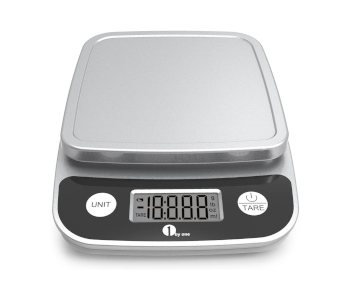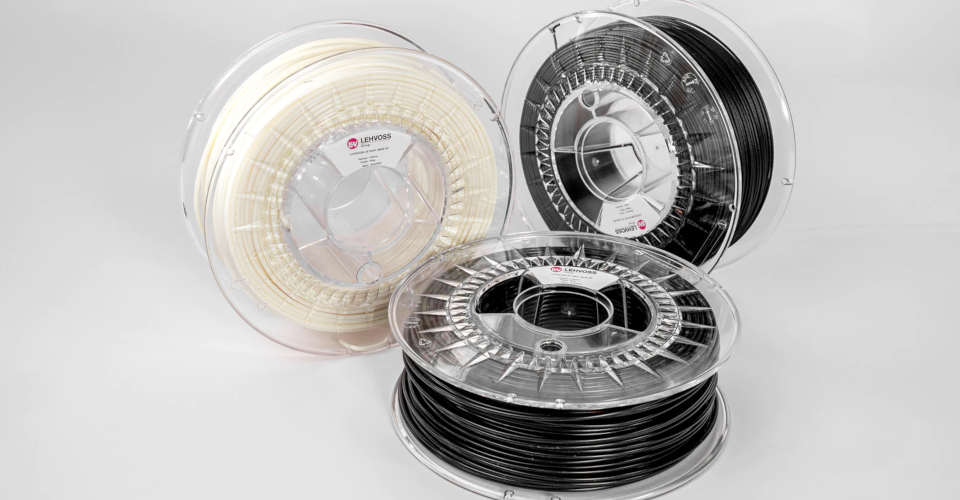How Many Meters of Filament Are in A Spool?
Have you ever been the middle of a 3D printing project only to notice that the amount of filament left in your spool might be cutting it close to what your model needs? This can drive anyone anxious, as running out filament in the middle of a print might mean needing to start over.
Finding out exactly how much filament you have left in a spool may be difficult to nail accurately, but it’s not impossible to come up with a reasonable estimate. If you’ve always wanted to document the length of filament in each of your partially consumed spools, then here’s a quick guide.
Why bother finding out?
While it doesn’t take a lot of work to estimate how much leftover filament you have for each spool, many would argue that it’s not necessary. Ignorance is bliss, and one can just order another spool online if they are close to running out. However, there are two crucial moments in a 3D printing project where this information can come in handy:
While you are slicing a 3D model
One of the final steps in translating a 3D model to a language that can be understood by a 3D printer involves processing it in a slicer software. This is where you can make tweaks to the mode to optimize it for 3D printing. You can adjust the wall thickness, change the infill patterns, and add support structures if needed.
Making changes to any of these parameters means that the software will adjust how much filament is needed to print the model. Once you’re satisfied with your settings, the software will give you a final number, typically in terms of the length of filament you will need.
Now, check that number with the length of filament you have left. If you don’t have enough filament, then this is your last chance to tweak your slicer settings just so you can eke out one last print from your spool.
When you mount a spool to start 3D printing
If you don’t keep a detailed inventory of how much filament you have in each spool, then mounting any of them to your 3D printer to start a project is an exercise in guesswork at best. Do you have enough filament or are you going to run out before the project finishes?
It’s better to be sure because keeping an eye on a 3D printer for several hours is only a notch higher in the entertainment spectrum to watching paint dry.
Which information do you need?

Fortunately, there is only one tool you need to reasonably estimate the length of filament left in a spool – a digital balance. If you don’t have one yet, then this is the time to consider buying one. A digital scale should be an essential part of your 3D printing workshop. They don’t need to be expensive. This digital kitchen scale from 1 BY ONE has a capacity of 5 kilograms, comes with a stainless steel platform, and costs less than $15.
Once you have your digital scale balanced and calibrated, go ahead and weigh your spool with the leftover filament. Write this number down. For this example, we will designate this variable as the Weight of spool + filament and designate a value of 725 grams.
We’re not quite out of the woods yet. There are still three very important values you’ll need to look for.
The weight of the empty spool
There was a time when the spools of 3D printing filaments looked alike, and an estimate of around 250 to 260 grams seemed reasonable. Today there are way too many brands, some of which use spools made of clear plastic or cardboard. For this reason, using an estimate with no basis will no longer be acceptable.
There are two ways to go about this – weigh an empty spool yourself if you have one around or ask the manufacturer for the weight of their empty spools. Take note that there will inevitably be variations in the weights of these empty spools, even if they come from the same production line.
For our example, this variable will be designated as the Weight of empty spool with a value of 235 grams.
The density of the filament
You will also need the value of the density of the filament, or its weight per unit volume. Ideally, you can use book values for the density of each material. For instance, PLA has a standard density of 1.25 grams per cubic centimeter, while ABS has a density of 1.53 grams per cubic centimeter.
However, using book values may not be accurate enough. 3D printing filaments rarely come made purely out of the main filament material. Dyes are added to give them color, while some filament may have additives that help them flow better or enhance their heat stability.
To settle this uncertainty, it’s best to go straight to the manufacturer. Some filaments indicate their density value on the packaging itself. If this isn’t the case, then most brands would be gracious enough to give you a value.
For this example, the Density of filament will be assigned a value close to PLA – 1.32 grams per cubic centimeter.
The diameter of the filament
Lastly, you will need value for the diameter of your filament. This should be easy because there are only two options: 1.75 or 3.00 millimeters. This should be clearly labeled in the spool. For our example, let us assume that we have a 3.00-millimeter filament.
How to calculate for the length of filament in a spool
Let’s organize all our values into a nice little table so we don’t end up confused:
| Parameter | Value |
|---|---|
| Weight of spool + filament | 725 grams |
| Weight of empty spool | 235 grams |
| Density of filament | 1.32 grams per cubic centimeter |
| Filament diameter | 3.00 millimeters OR 0.3 centimeters |
With all these values on hand, just follow the steps to calculate for filament length.
1. Determine the weight of the filament by subtracting the weight of the empty spool from the total weight of the spool with the filament.
Weight of filament = (Weight of spool + filament) – (Weight of empty spool)
= 725 grams – 235 grams
= 490 grams
2. Calculate for the volume of the filament left in the spool
Volume of filament = (Weight of filament) / (Density of filament)
= 490 grams / 1.32 grams per cubic centimeter
= 371.21 cubic centimeters
3. Calculate for the cross-sectional area of the filament based on its diameter
Cross-section area = 3.14 x (Filament diameter / 2)^2
= 3.14 x (0.3 centimeters / 2) ^2
= 0.07065 square centimeters
4. Calculate for the length of leftover filament
Length of filament = Volume of filament / Cross-section area
= 371.21 cubic centimeters / 0.07065 square centimeters
= 5,254 centimeters OR 52.54 meters
For our example, we have come up with an estimated leftover length of 5254 centimeters of filament. Take note that the operative word here is ESTIMATED. We’ve made a lot of simplifications along the way (empty spool weight and filament density, among others) which means that this value may be off by a few centimeters. Just to play it safe, make sure that you have an allowance of at least 10% of the filament length required by your model.
Final thoughts
Experienced 3D printing professionals know the struggle of having to store so many half-consumed filament spools in their workshops. There’s also the anxiety of not knowing if that spool you loaded – which feels uncomfortably light – has enough filament to finish 3D printing a model.
The good news is that it doesn’t take much to come up with a reasonable estimate. Just whip out that digital scale every time you need to print with a spool that’s on the verge of running out.


